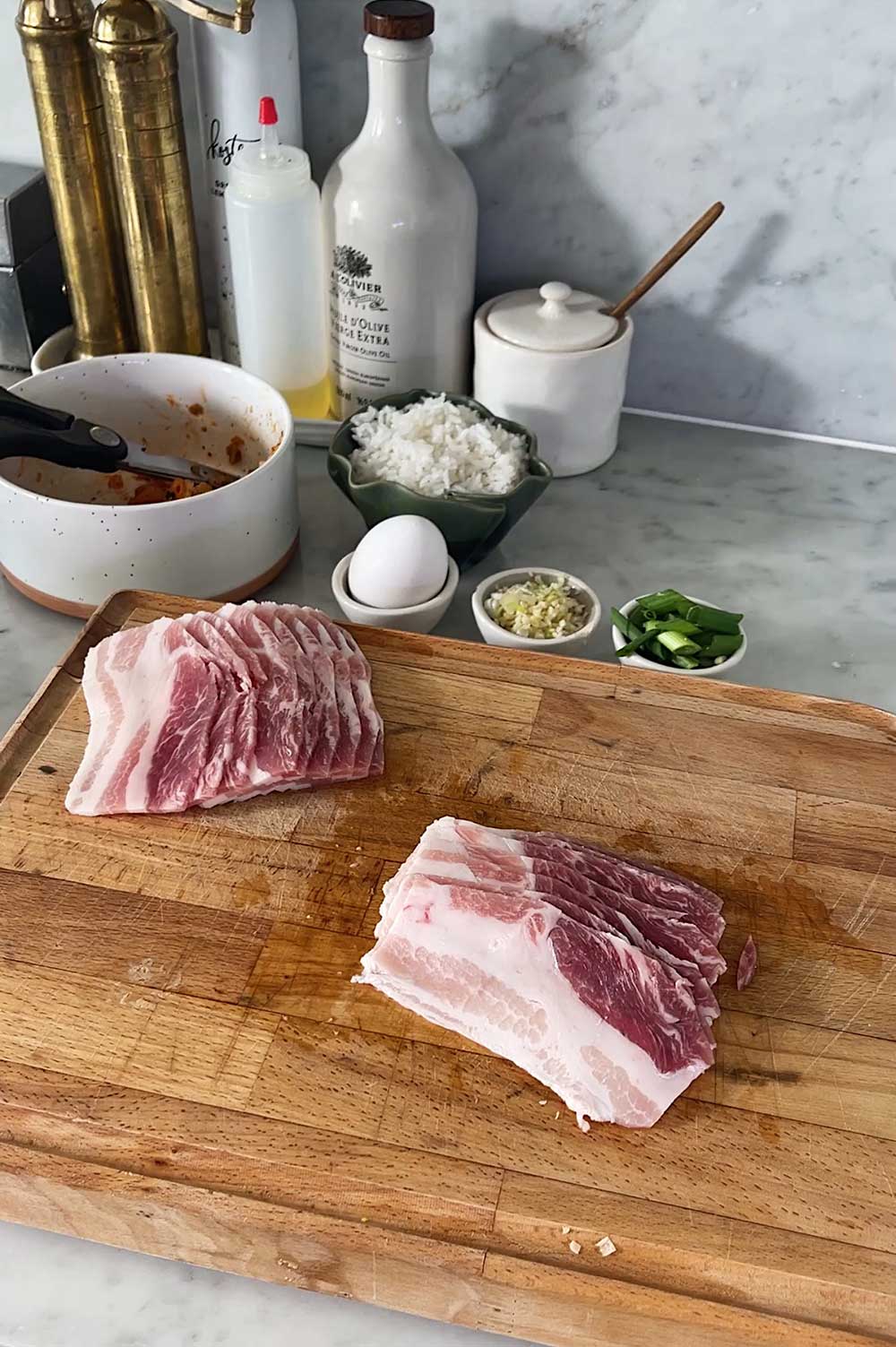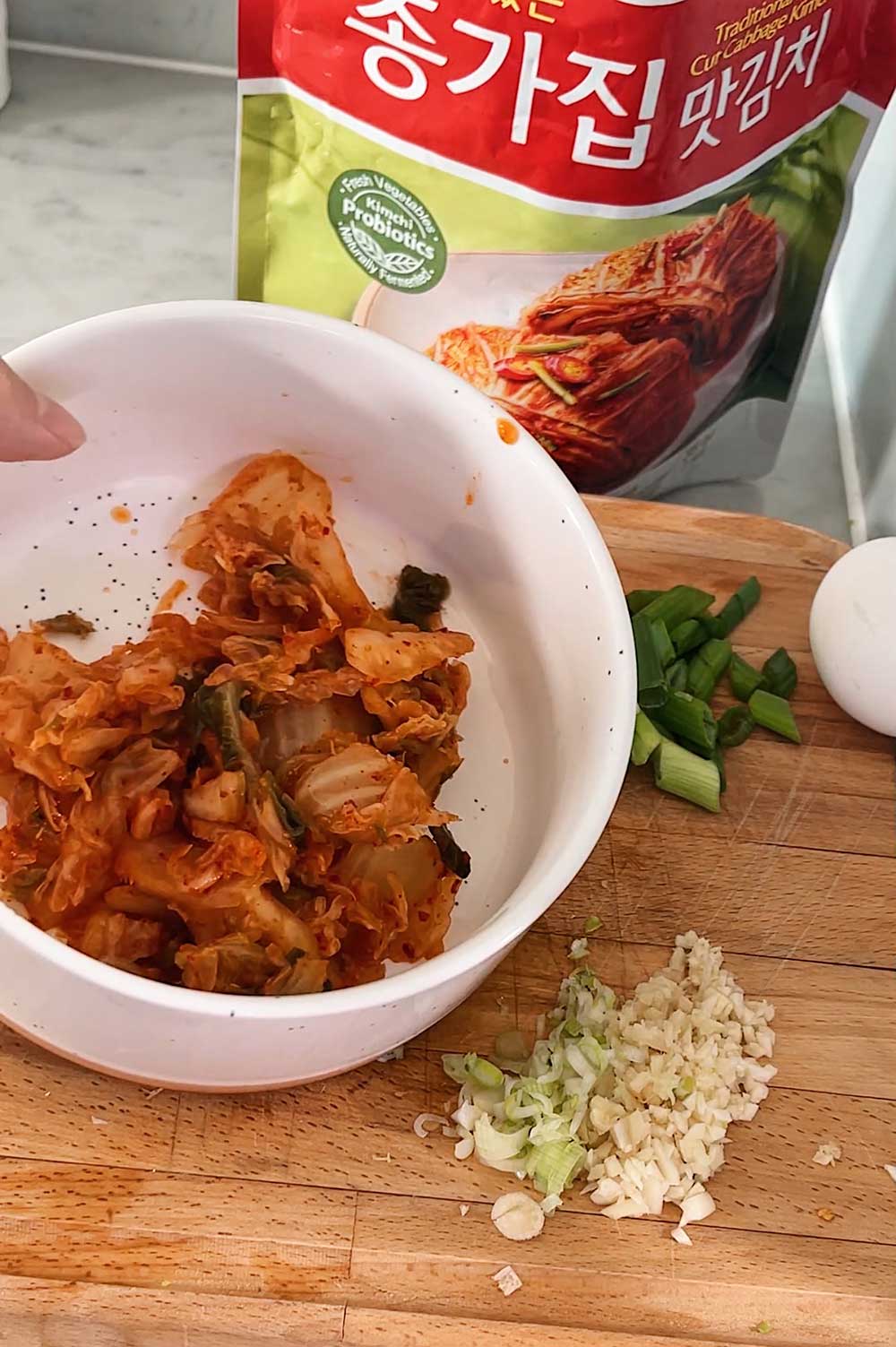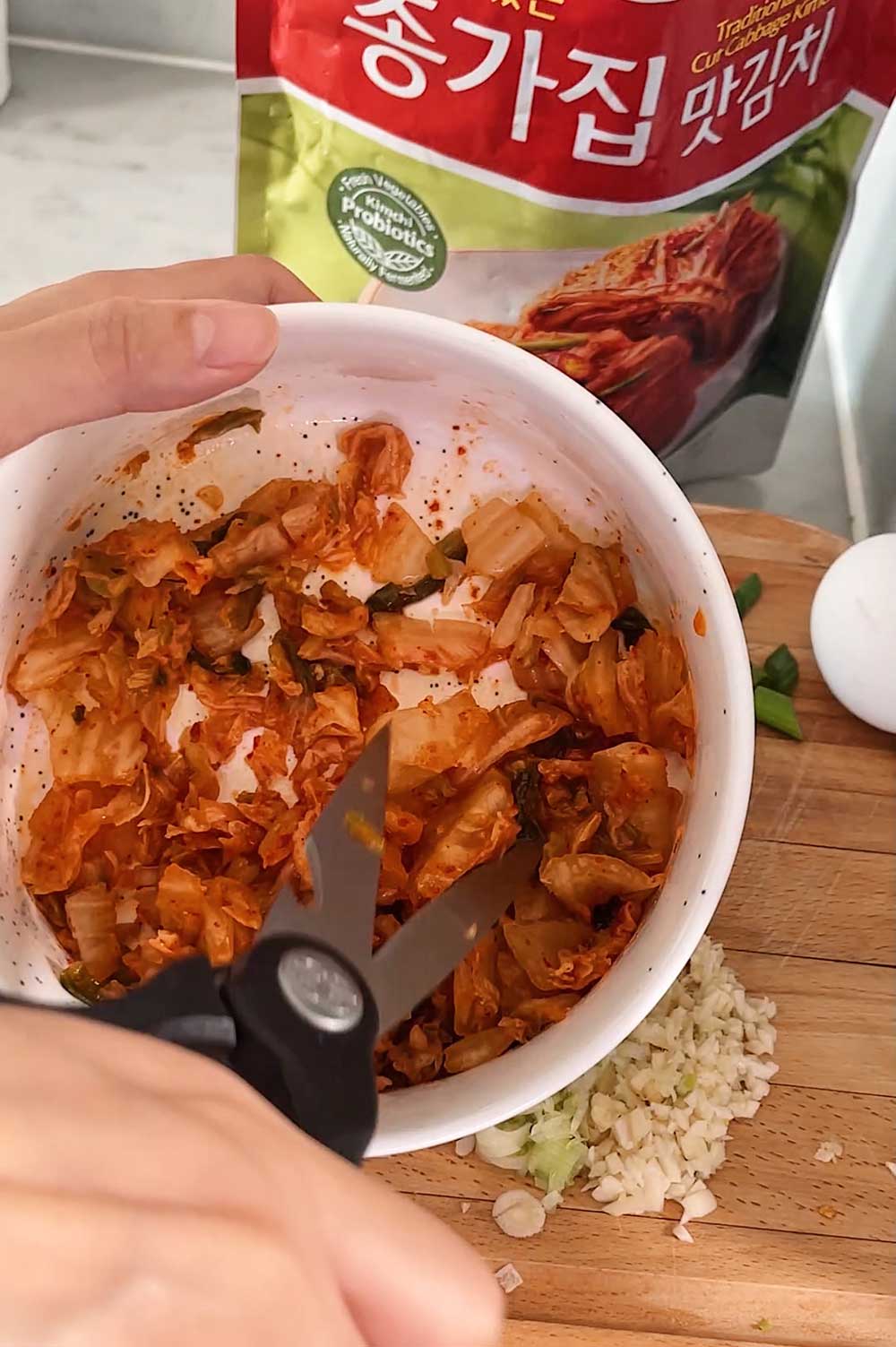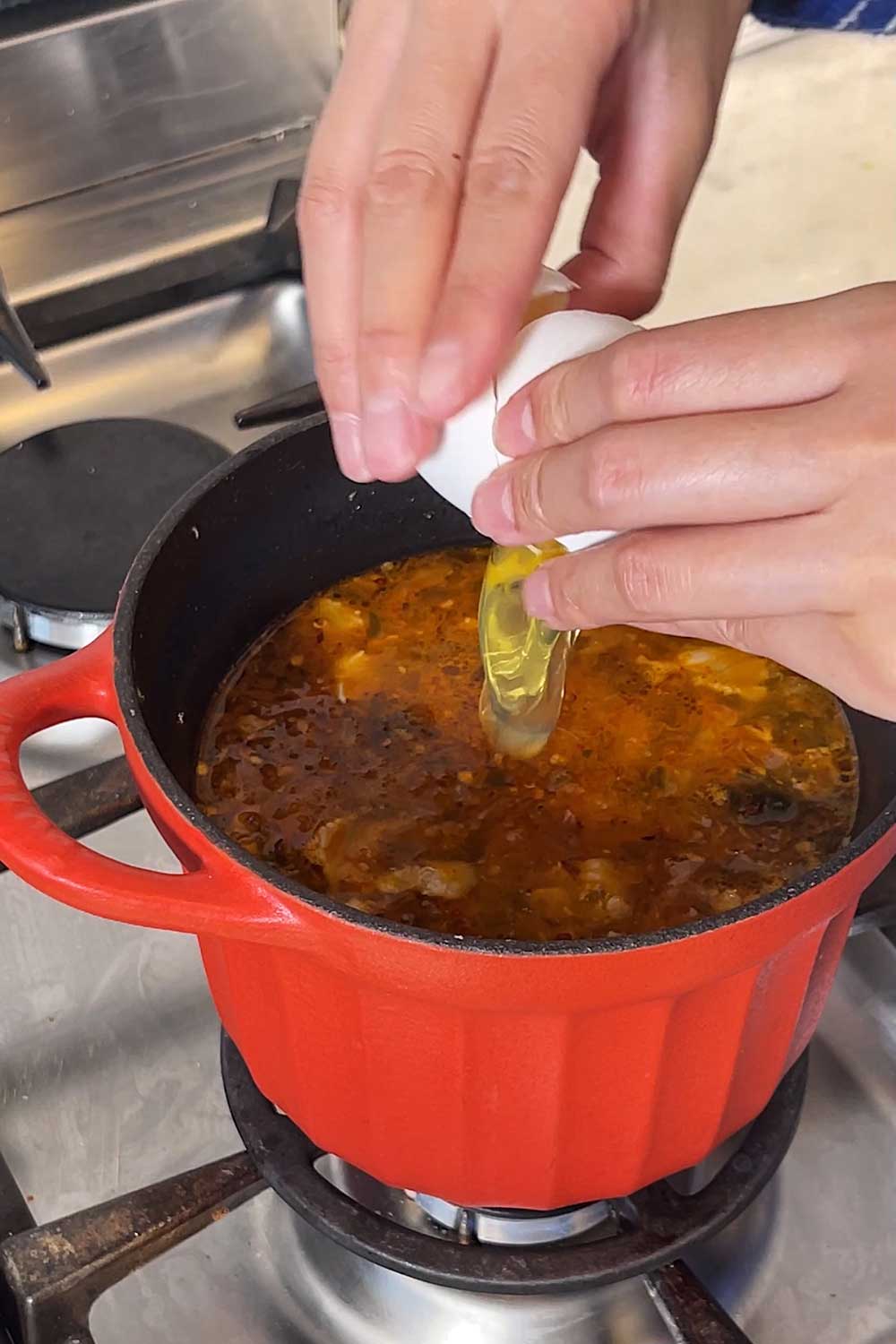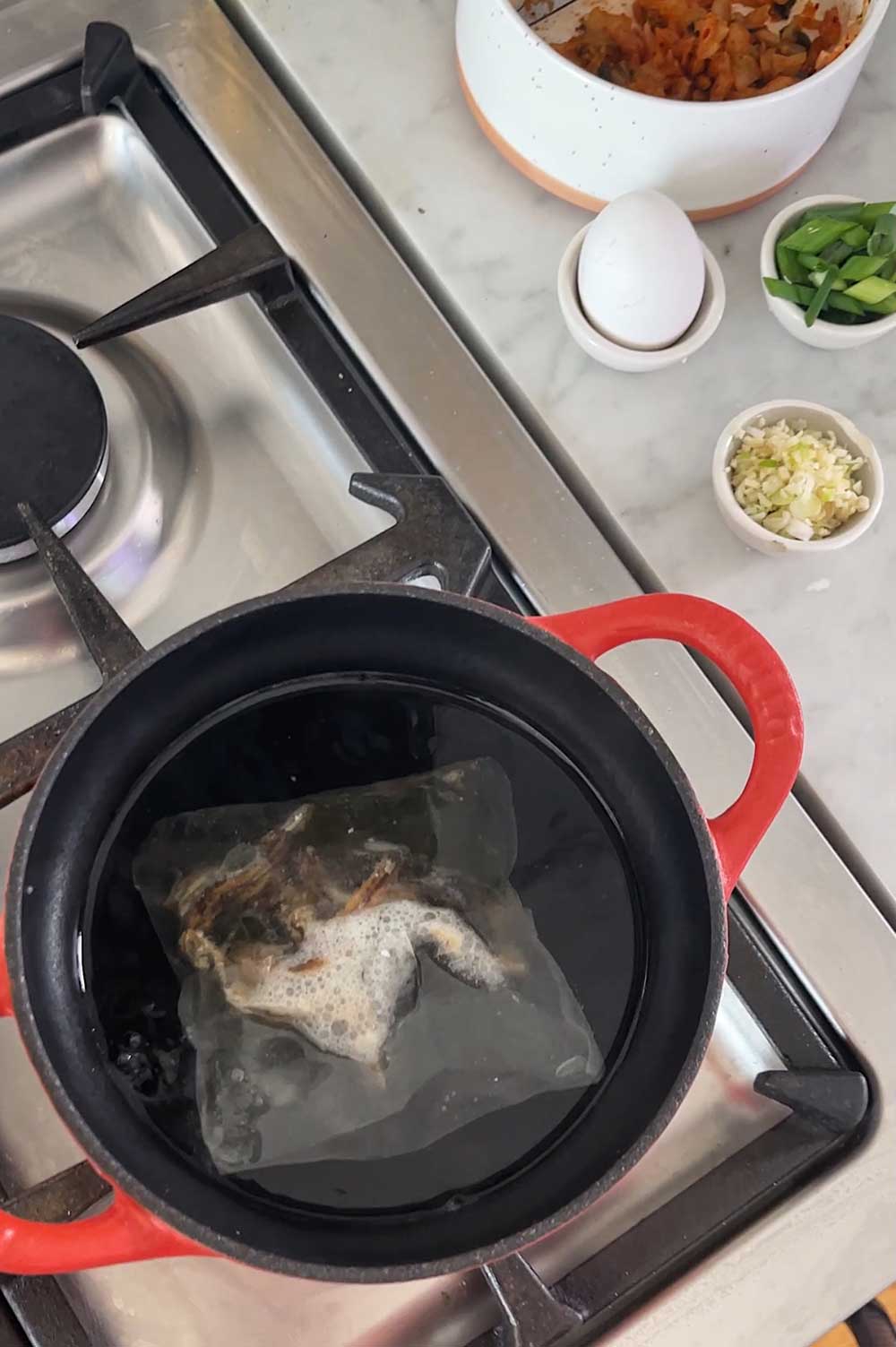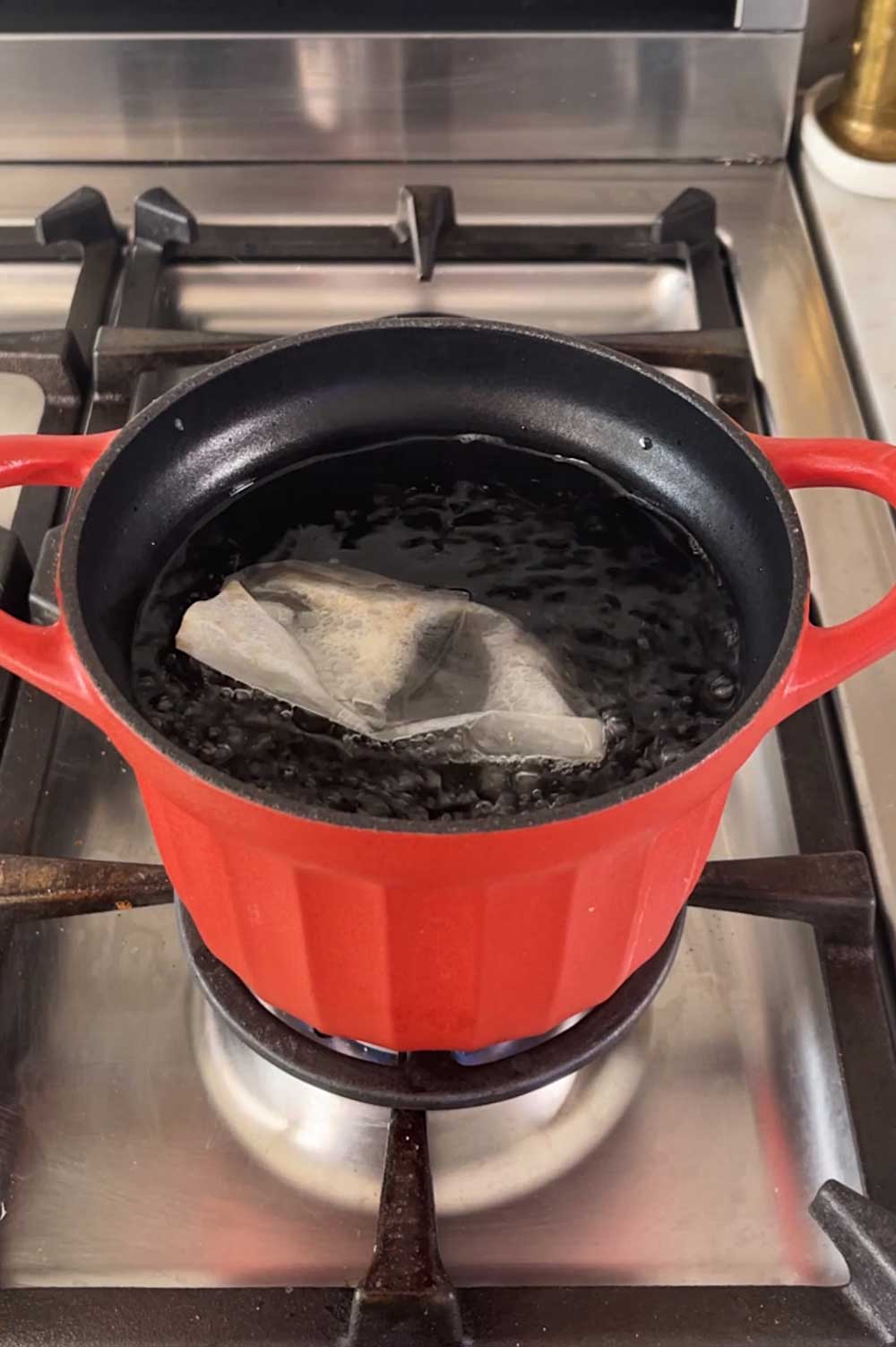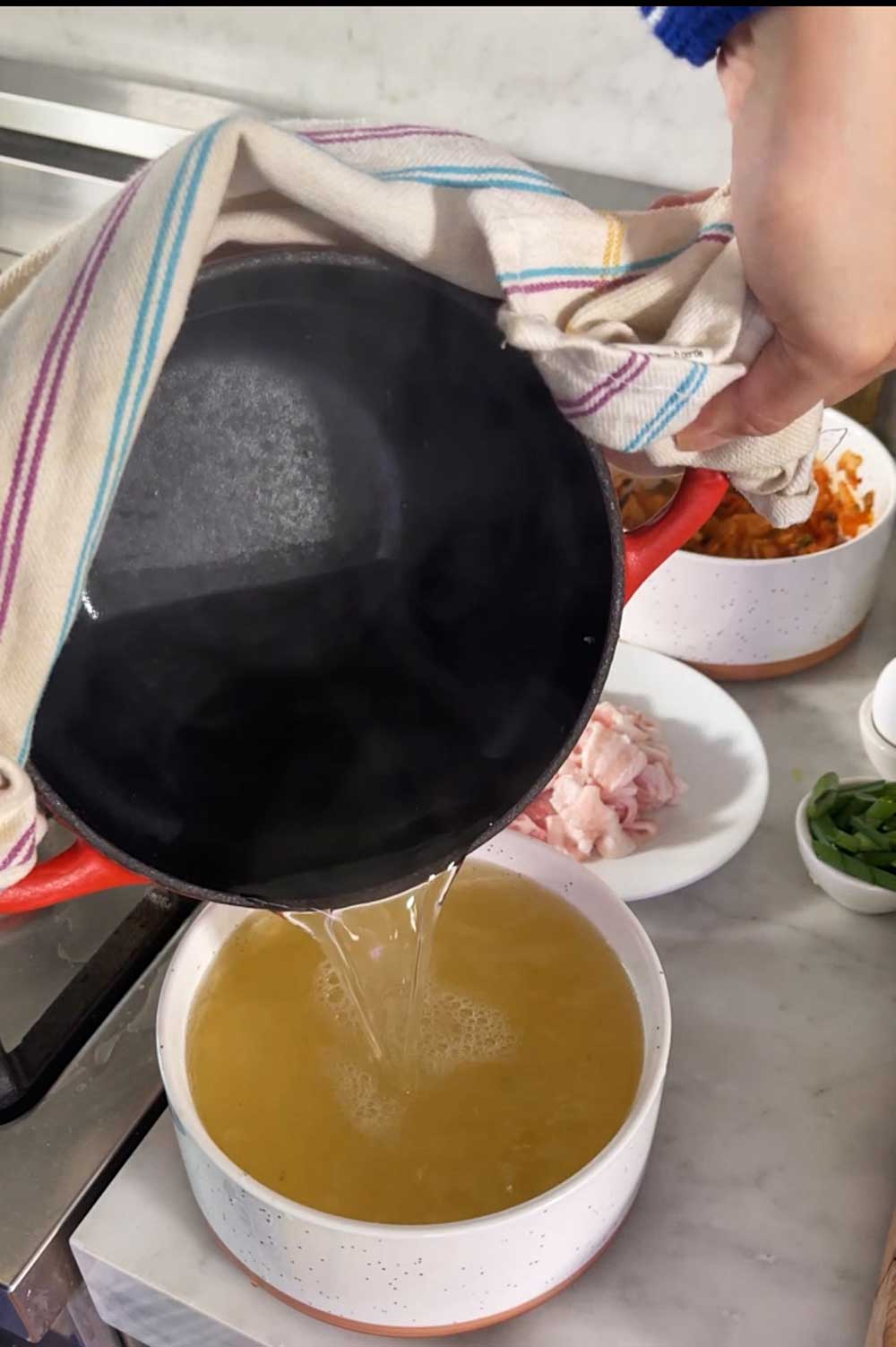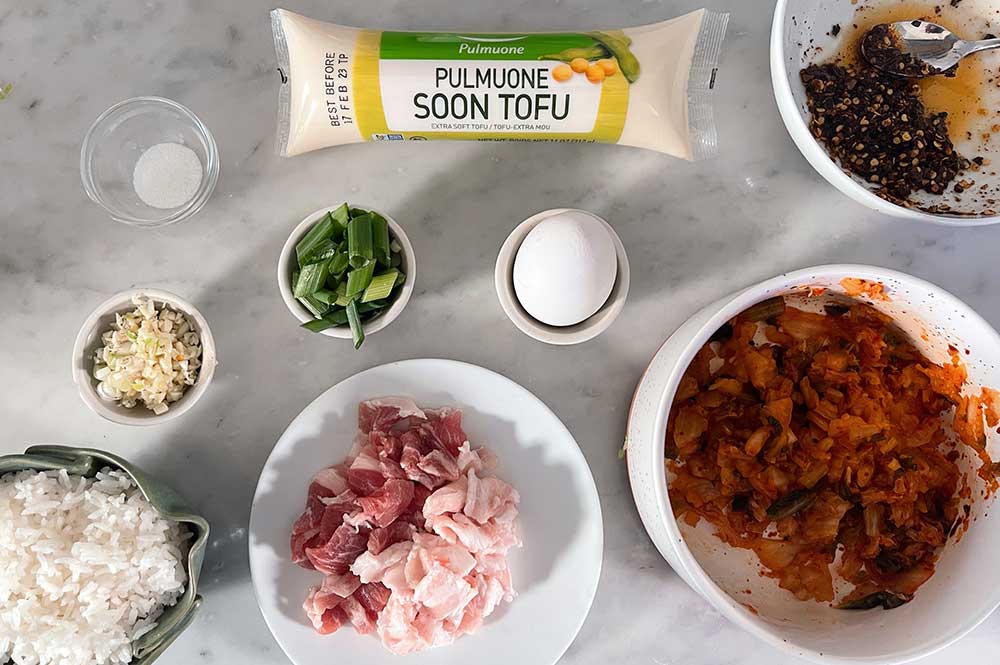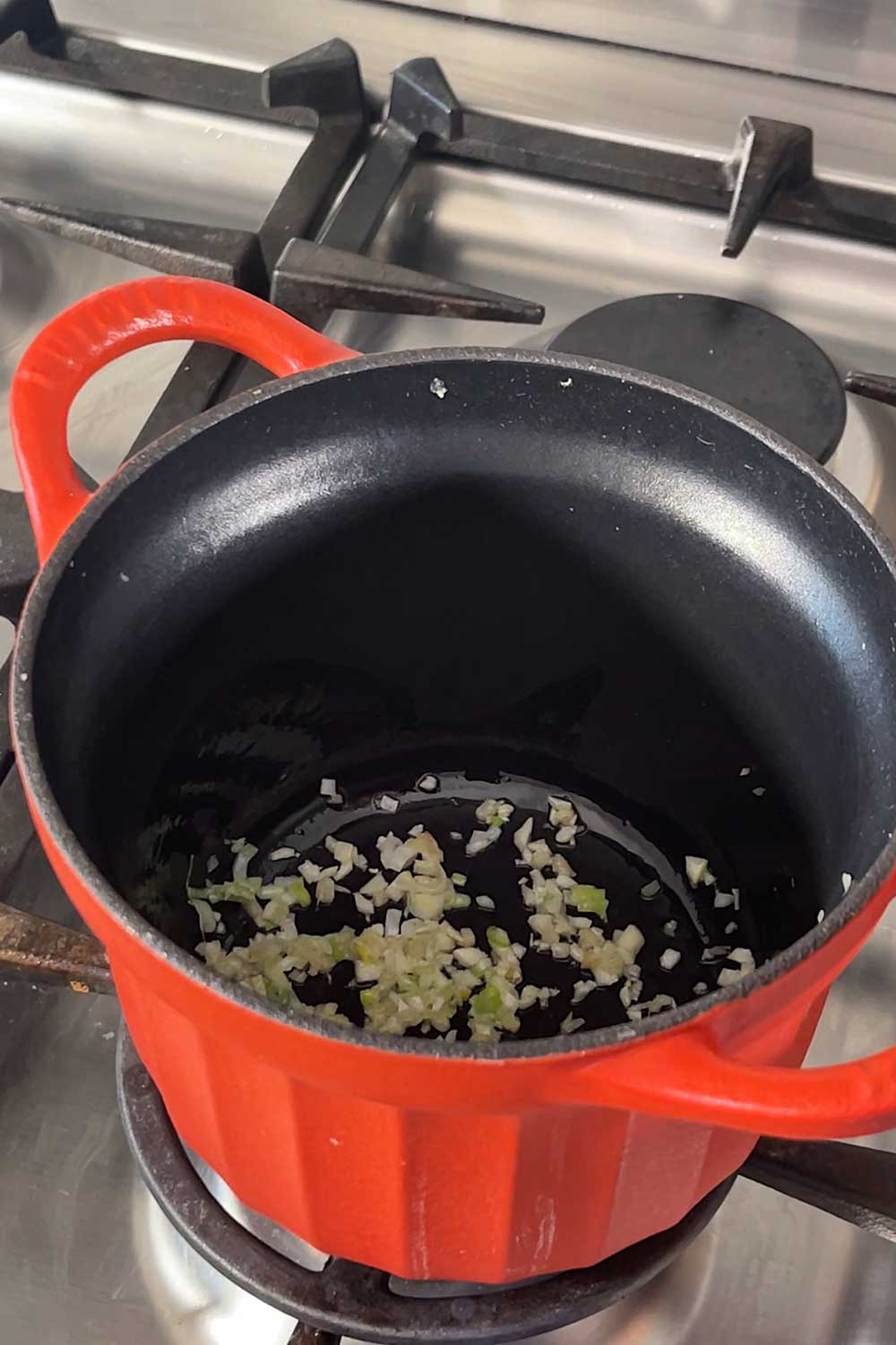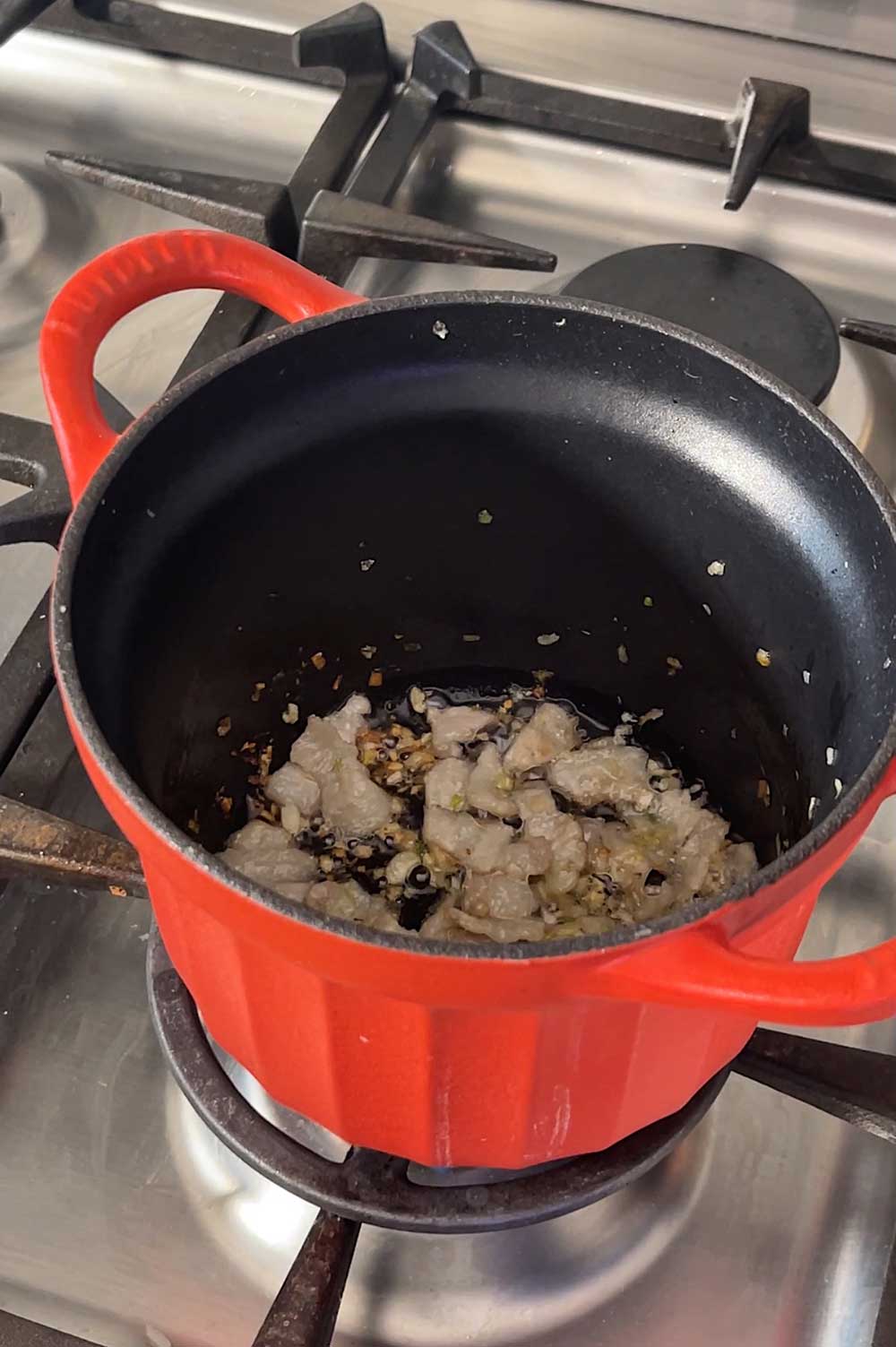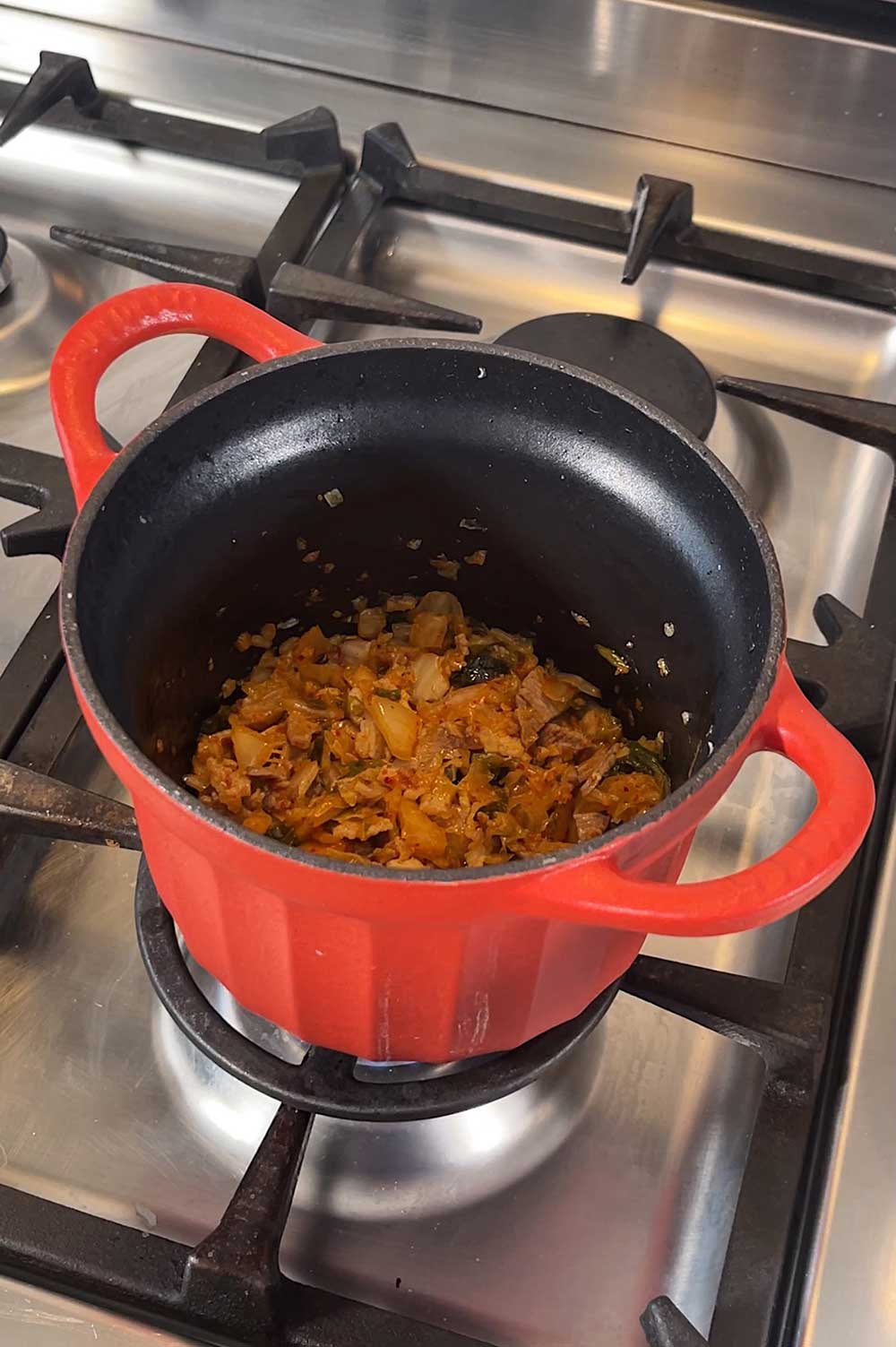Sundubu jjigae is a classic, comforting Korean stew made with kimchi, pork belly and silken tofu. It’s salty, sweet, spicy… all in one warm bowl!
Korean Spicy Soft Tofu Stew
When I first heard about Korean soft tofu stew, I’ll admit – the name didn’t really sound appealing.
Tofu.. and soft tofu at that?
But then I tried it and I was blown away! Sundubu jjigae is a warm savory bowl of soup, with chunks of silky soft tofu and a hint of smokiness. It’s usually served in a small individual-portioned bowl and tastes like a warm bowl of comfort.
In fact, this dish is so good there’s a popular restaurant in Ktown that specializes just in sundubu (BCD tofu house if you’re in NYC). It was basically a ritual throughout my 20s to end a night out with Korean food and my friends and I always ordered sundubu jjigae and kimchi pajeon.
The contrast between deep fried crispy pancake and hot savory stew always hit the spot… and helps prevent hangovers :)
My weekends look a little different these days, but the craving for Korean tofu stew has never gone away.
Here’s an easy recipe to make sundubu jjigae at home.
Keep reading, or pin this article to save it for later ⇟
never liked tofu until i had soondubu jjigae 🫡 #tofusoup #soondubujigae #softtofusoup #kimchisouprecipe Pork Belly The two most important ingredients in this dish is a great broth and Korean red pepper flakes, or gochugaru. You can find both at Korean grocery stores. To make a flavorful, golden yellow stock you’ll need dried kelp, anchovies and radish. You can buy the ingredients or these pre-packaged stock packets. Korean red chili flakes are different from American red chili flakes. They’re more of a vibrant red and finer powder. Gochugaru is a uniquely Korean spice that’s used throughout Korean cuisine, so it should be a pantry staple if you like Korean food! The dried red pepper powder is used to make kimchi and also to make gochujang, or spicy red pepper paste. Don’t worry if you can’t take spicy food. It’s more savory than spicy. Sundubu means soft tofu in Korean, while jjigae means stew. The classic version of the soup contains pork belly, but you can also make it vegetarian by just having kimchi (kimchi jjigae). Another popular version is haemul sundubu jjigae, with an assortment of seafood like shrimp, little clams and mussels. Any Korean restaurant will usually offer multiple varieties of soondubu! Sometimes Asian ingredients can be hard to find, but the best place to get everything you need is at H-mart. It’s a Korean grocery store so they carry lots of Korean brands and specific cuts of meat that are perfect for Asian and Korean dishes. I usually get Jonnga kimchi. It comes in a medium or large sized bag. There are lots of different types of kimchi, from whole un-cut cabbage to diced radish cubes as well as yeolmu kimchi (which uses young summer radishes and has more chive-y greens). Tip: add your kimchi to a small bowl using chopsticks or tongs. Use kitchen shears to cut the kimchi into slices. This way, you won’t stain your hands or a cutting board. Whatever you do, don’t buy the Mother In Law kimchi jars you see at Whole Foods. That stuff is flavorless, overpriced and downright awful! Pork belly is basically bacon, but at Asian grocery stores it’s butchered a little differently into very thin strips. The classic way to make sundubu is in a Korean earthenware pot called ttukbaegi. It’s a small, heavy black bowl that takes a while to heat up, but retains heat well. The pots are small and individual sized, so if you’re making sundubu jjigae for a group it’s nice to have multiple pots. The bowls go straight from the stove to the table and keep the stew nice and bubbly. The best way to eat sundubu is to crack an egg right into the soup. Spoon a bit of broth over the raw egg and leave it alone for a couple minutes. The ttukbaegi will maintain the sizzling temperature and allow the egg to cook, thickening up the broth. Small cast iron pots are a good alternative if you don’t want to buy a separate pot. I have this one and use it often since it’s a good size for one person and tucks away nicely in a small kitchen! And speaking of Korean dishware, sundubu jjigae tastes better when eaten with Korean spoons :) With any soup, the flavor really comes down to the broth. I use these anchovy kelp packets as a quick and easy way to make flavorful broth. The packets are individual mesh pouches filled with various ingredients like dried seaweed, anchovies, radish or shiitake mushrooms. To make the stock, add the packet to a small pot of water and bring to a boil. Then let everything simmer for ~20 minutes and you’ll be left with a rich golden liquid packed with umami. You can also buy the ingredients separately, but I find that buying the packets saves time. Korean red pepper flakes, or gochugaru, are what give this stew its distinctive red color and spiciness. If you don’t like spicy food, you can always adjust the amount of gochugaru. But in general, gochugaru isn’t really all that spicy – it’s more of a savory paste with just a bit of kick. You can find Korean red pepper flakes at Korean grocery stores or buy it online here. There are many different types of tofu but this dish is specifically designed around silken tofu. Look for the tubes of Korean soft tofu. They slowly break apart into chunks and add a silky, soft texture to the soup. If you like sundubu jjigae and want to have the dish often, a great hack to save time is to make soondubu paste. Essentially you create a thick paste of all the ingredients and freeze it in individual portions. That way, you don’t have to make the stock and all the different components from scratch every time. I find it handy to spoon out the paste into ice cube trays and then freeze, so that they’re in individual blocks, approximately 2 tablespoons each. To use, just add ½ cup of water for every 2 tablespoons of paste. Bring it to a boil and add your tofu. Garnish with spring onion, add an egg and eat with rice. And voila! Sundubu in record time. A comforting bowl of soft tofu stew. Make the Stock Make the Spicy Red Pepper Paste Make the Stew As an Amazon Associate and member of other affiliate programs, I earn from qualifying purchases. Follow me onSundubu Jjigae Recipe Video
What You’ll Need
How to Make Soondubu Jjigae
Kimchi, Pork Belly or Seafood
Where to Find Kimchi and Pork Belly
Ttukbaegi
Making the Broth
Gochugaru
Soft vs Firm Tofu
Soondubu Paste
Sundubu Paste Ingredients
Make sundubu paste:
Sundubu Jjigae Recipe
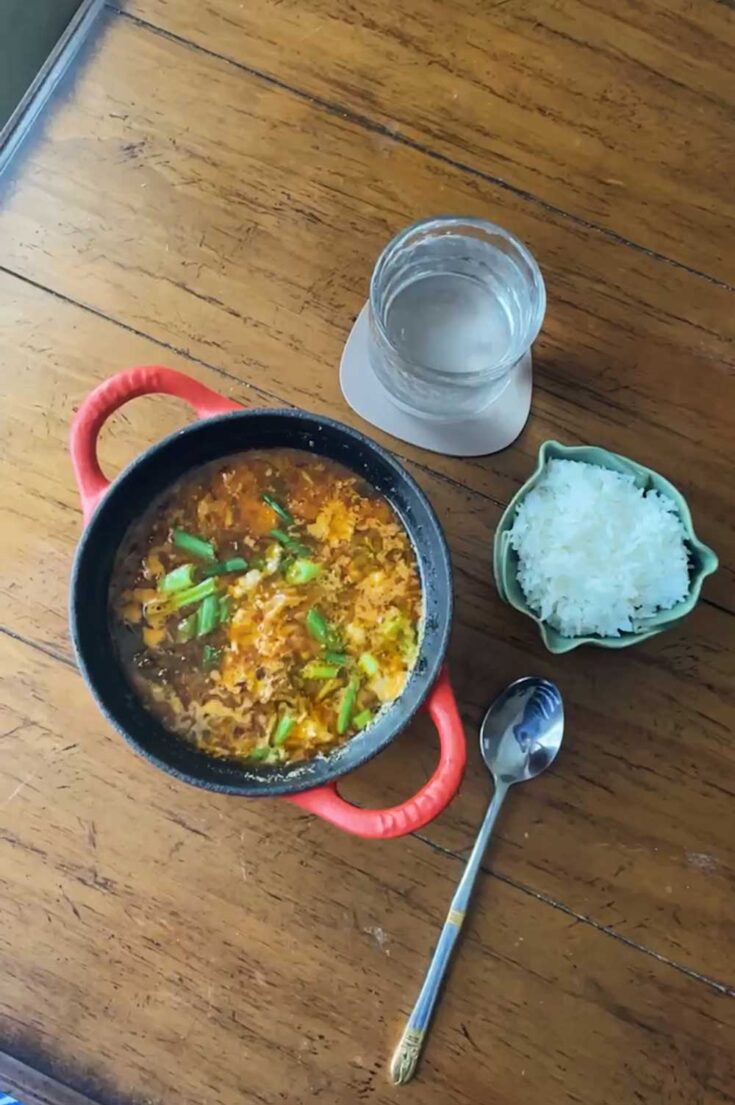
Korean Soft Tofu Stew (sundubu jjigae)
Ingredients
Stock
Red Pepper Paste
Stew
To Serve
Instructions
Recommended Products
Nutrition Information:
Yield:
1
Serving Size:
1
Amount Per Serving:
Calories: 841Total Fat: 51gSaturated Fat: 12gTrans Fat: 0gUnsaturated Fat: 35gCholesterol: 244mgSodium: 3362mgCarbohydrates: 33gFiber: 10gSugar: 14gProtein: 75g
